Local News
I.L. Peretz School Class of ’63 celebrates 60th anniversary reunion
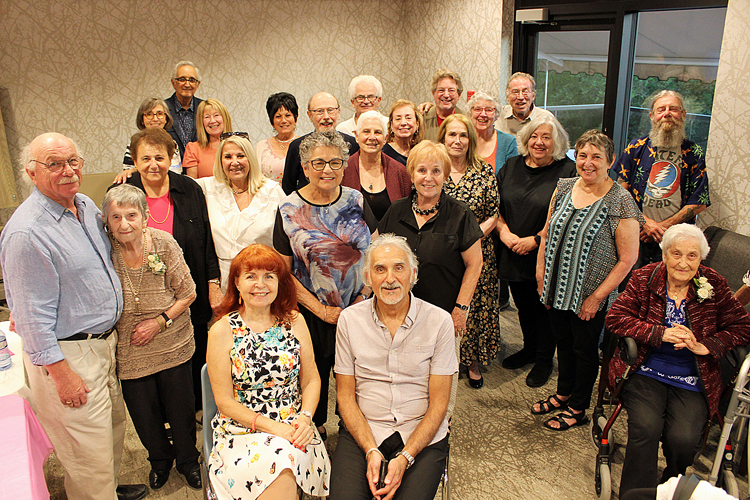
By SHARON LOVE On the weekend of July 7-9, the I.L. Peretz Folk school class of ‘63 held another get together- this time in celebration of the 60th anniversary of our graduation.
With a few Zoom meetings during the last three years, we chose a specific date and the wheels started turning. Our local organizing committee members were: Bella (Sapoznik) Ben-Ari, Donna (Gorenstein ) Cohen, Bailey Rayter, Janis (Swick) Wisher, Harold Abosh and Lanny Silver, and this writer, along with spouses/partners Marvin Ben-Ari, Mark Cohen, Karen Rayter, Ian Mckeown, Elizabeth Abosh, and Zipora Malamuth. So we just picked up where we left off.
Speaking of picking up where we left off, our very first reunion took place in Vancouver because the ‘kinder’ there like to organize. We celebrated our 50th birthday reunion there in May 2000. We were back in Vancouver in November 2010 in celebration of our 60th birthdays. We got together here in Winnipeg in August 2013, to mark the 50th anniversary of our graduation. We were in Vancouver in July 2015 celebrating our 65th birthdays. We were scheduled to come together in 2020 for a joint celebration of our 70th birthdays but we had to cancel due to the Covid lockdowns.
Covid, however did not dissuade us nor dampen our enthusiasm and our event turned out to be a weekend to remember. The ‘kinder’ included Winnipegger David Kives as well as out of towners Earl Zimmer, Carol Pollock, Faigie (Raber) Samson, Reesa (Margolis) Devlin and husband Bob, Ethel (Levine) Kofsky and partner Don Rosenbloom, Myrna Shefrin and Lorraine Meltzer.- all from Vancouver – as well as Gity (Shklarsky) Moritz-Finkel and husband Chet from Florida; Anita (Ladner) Bakal and husband, Marty from New York Candi Zell and Ron Charach and wife Alice from Toronto; Butchy Itzkow from Kingston, Laurie Landy from Appleton (near Ottawa); and Hilda (Szternfeld) Smith and husband Lennyfrom Calgary.
How did we celebrate our busy weekend? We kicked off the festivities with a Shabbes dinner hosted by our local committee at the party room at 141 Wellington Crescent, the home of Bailey and Karen Rayter. What with our reunioners and with guests and friends we were around 40 people. You could just feel and see the excitement in the air as guests started arriving. We ‘benched’ Shabbes candles and enjoyed challah buns which Gity brought from Miami. There was an abundance of food and drink and for dessert, fruit, cheesecake and Jeanne’s cake. For our first event of the weekend, could you ask for anything more?
Of course there was more. Our three special guests, mothers of three of our classmates joined us for this memorable occasion. Edith Landy, mother of Laurie, Ruth Zimmer, mother of Earl and Arnice Pollock, the mother of Carol, were beaming all evening. After all they have known many of us since we were young kids!
There were a few speeches and we also toasted classmates in our heart, Annette (Feldman) Nagler, Barbara (Shoib) Murray, and Nathan Meltzer, who left us all too soon.
A big thank you went out to our classmate Brenda (Grushko) Casey, who could not join us in person from Vancouver, but gifted the flowers and Jeanne’s cake. Thanks also went out to the I.L.Peretz School Trust, which helped sponsor this event.
We watched the video of our reunion from 2013, which was made by Marvin Ben-Ari. There were also tables covered with pictures and other memorabilia.
Saturday was a free day. Some visitors spent time with friends and relatives. Others took in the Museum for Human Rights and some just drove around their old neighbourhoods and places where they used to hang out.
Saturday dinner took place at Sorrento’s in Charleswood. The noise level was high because we all had so much to talk about. Sunday brunch was at the Hilton Garden Inn and we had the patio all to ourselves.
Parting speeches included a thank you to the Winnipeg hosts. We are awaiting the video that Marvin took of the entire weekend and appreciate his doing this. Suggestions for our next reunion were made for perhaps in two years and Vancouver seems to be where it will take place.
The weekend flew by and yet there still wasn’t enough time to visit with everyone. What with Zoom and social media these days, it’s so much easier for people to be in touch with each other wherever they live. I still say that nothing takes the place of in person schmoozing!
In my book our weekend can only be described by one word. As a proud graduate of the Peretz School, that word is ‘Oysergevanelech’!

Local News
Thank you to the community from the Chesed Shel Emes
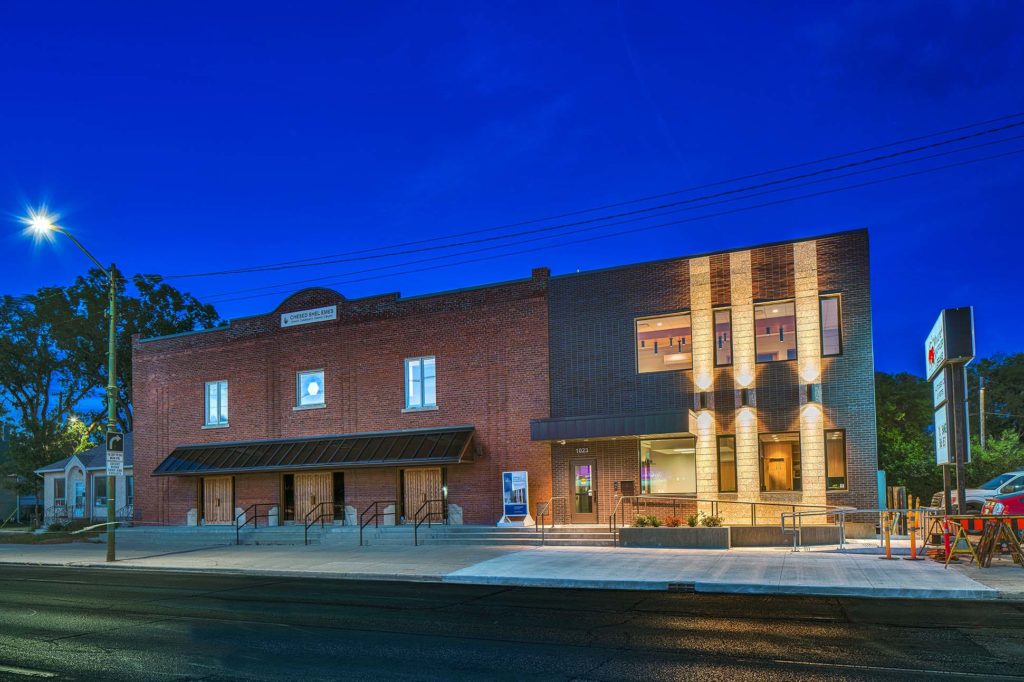
We’re delighted to share a major milestone in our Capital Campaign, “Building on our Tradition.” Launched in November 2018, this campaign aimed to replace our outdated facility with a modern space tailored to our unique needs. Our new building is designed with ritual at its core, featuring ample preparation space, Shomer space, and storage, creating a warm and welcoming environment for our community during times of need.
We’re grateful to the nearly 1,000 generous donors who contributed over $4 million towards our new facility. A $750,000 mortgage will be retired in November 2025, completing this monumental project in just seven years.
We’re also thrilled to announce that our Chesed Shel Emes Endowment Fund has grown tenfold, from $15,000 to $150,000, thanks to you, the Jewish Foundation of Manitoba’s FundMatch program, and Million Dollar Match initiative in 2024. Our fund helps ensure that everyone can have a dignified Jewish funeral regardless of financial need.
As we look to the future, our goal remains to ensure the Chevra Kadisha continues to serve our community for generations to come. Our focus now shifts to replenishing our savings account and growing our JFM Endowment fund.
We’re deeply grateful for your support over the past several years.
It’s our privilege to serve our community with care and compassion.
With sincere appreciation,
Campaign cabinet: Hillel Kravetsky, Gerry Pritchard, Stuart Pudavick,
Jack Solomon, and Rena Boroditsky
Murray S. Greenfield, President
Local News
Winnipeg Beach Synagogue about to celebrate 75th anniversary
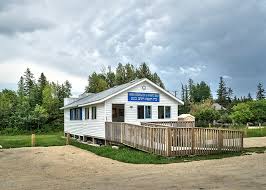
By BERNIE BELLAN (July 13) In 1950 a group of cottage owners at Winnipeg Beach took it upon themselves to relocate a one-room schoolhouse that was in the Beausejour area to Winnipeg Beach where it became the beach synagogue at the corner of Hazel and Grove.
There it stayed until 1998 when it was moved to its current location at Camp Massad.
On August 2nd members of the synagogue will be holding a 75th anniversary celebration.
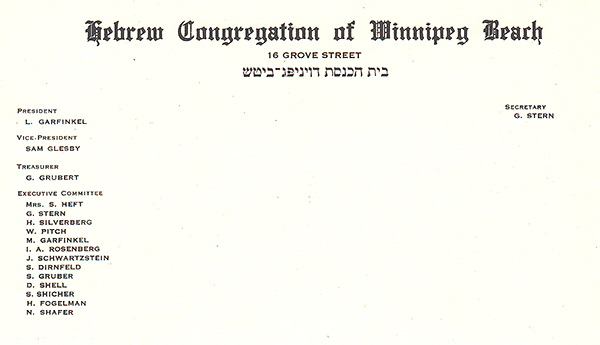
As part of the celebration anyone who is a descendant or relative of any of the original members of the first executive committee (as seen in the photo here) is invited to attend the synagogue that morning.
If you are a relative please contact Abe Borzykowski at wpgbeachshule@shaw.ca or aborzykowski@shaw.ca to let Abe know you might be attending or for more information about the 75th anniversary celebration.
We will soon be publishing a story about the history of the beach synagogue, which is something I’ve been writing about for over 25 years.
Local News
Vickar Family cuts ribbon on new Tova Vickar and Family Childcare Centre
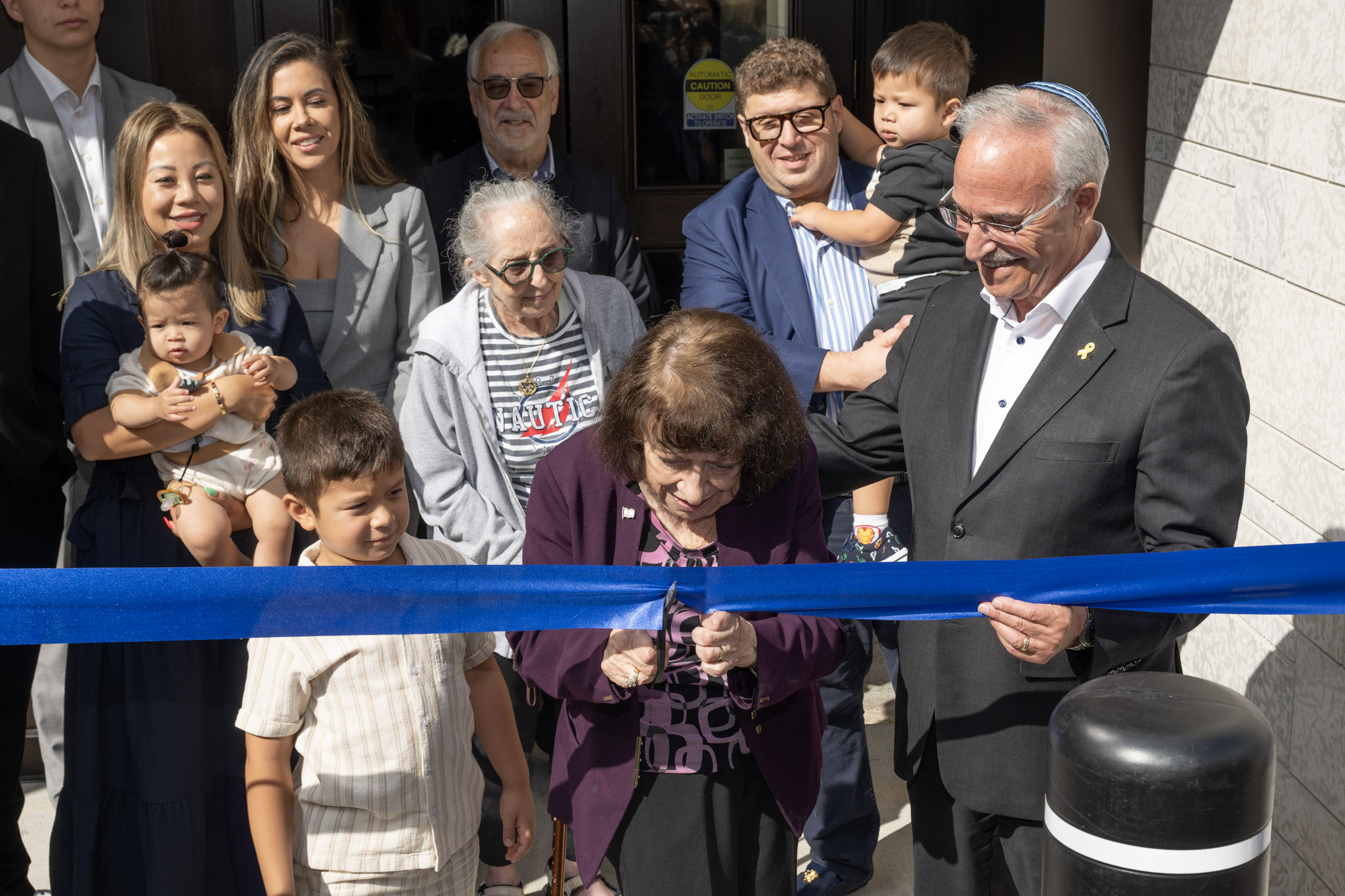
By MYRON LOVE In the words of Larry Vickar, the Shaarey Zedek’s successful Dor V’ Dor Campaign “is not only a renewal of the synagogue but truly a renewal movement of Jewish life in our community.”An integral part of that renewal movement was the creation of a daycare centre within the expanded synagogue. On Monday, June 23, Larry and Tova Vickar cut the ribbon, thereby officially opening the Tova Vickar and Family Childcare Centre in the presence of 100 of their family members, friends and other supporters of the project.
The short program preceding the morning ribbon-cutting began with a continental breakfast followed by a welcome by both Fanny Levy, Shaarey Zedek’s Board President, and Executive Director Dr. Rena Secter Elbaze. In Elbaze’s remarks, she noted that Larry and Tova wanted their family (including son Stephen and family, who flew in from Florida) and friends at the event to celebrate the opening of the Tova Vickar and Family Childcare Centre, “not because of the accolades, but because, as Larry put it, he hopes that their investment in the congregation will inspire others to do the same.”
“When Larry and I spoke about what this gift meant to him and the message he wanted people to take away,” she continued, “I couldn’t help but connect it to the teachings of Reb Zalman Schachter-Shalomi whose book – Age-ing to Sage-ing – changes the whole way we look at the concept of ageing and basing it on our ancestral teachings.”
She explained that his concept of “Sage-ing” is based on three key ideas – Discover your meaning and purpose; accept our mortality and think about the legacy you want to leave.
“Larry spoke about these exact concepts when we met,” she said.
Elbaze also noted the presence of Shaarey Zedek’s newly-arrived senior Rabbi Carnie Rose, former Rabbi Alan Green, and area MLAs Mike Moroz and Carla Compton.
Larry Vickar expressed his great appreciation for all those in attendance. “Tova and I are deeply moved to stand here with you today for this important milestone in our community”, he said. “We are grateful to be surrounded by all of you, the people we care about, our family and friends… you who have touched our lives and played some part in our journey.”
